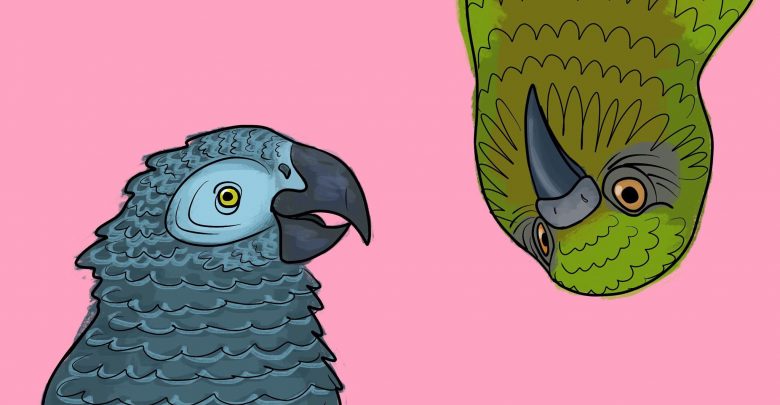 Olivia DeBourcier
Olivia DeBourcierNeuroscientists at the U of A have discovered what makes parrots so clever, and it turns out to be a part of the brain even mammals don’t have.
A recent study led by Cristián Gutiérrez-Ibáñez, a postdoctoral fellow in the psychology department, found that birds with a large medial spiriform nuclei (otherwise known as SpM) possess the ability for complex thinking. Nearly 100 brains from 16 orders of birds were examined, with parrots tending to have the largest SpM.
Gutiérrez-Ibáñez’s team originally wanted to see if bird brains possess a pontine nuclei, a brain structure in mammals that’s associated with greater intelligence.
“Initially we were not only focused on parrots, we were just interested in studying bird brains,” Gutiérrez-Ibáñez said. “Later when I came back, I was interested in the connections between the two largest areas of the brain.”
The pontine nuclei sits between the cortex, which controls thought processing, and the cerebellum, which regulates motor control. The pontine nuclei allows information to be fed back and forth between these two areas of the brain, allowing for complex behaviour and thought.
Gutiérrez-Ibáñez and his colleagues suspected that because of the behaviours and large forebrains of many intelligent birds, they would have a large pontine nuclei just like primates. But contrary to their suspicions, the pontine nuclei was quite small in birds.
Instead, they found that another part of the brain, the SpM, was larger in highly intelligent birds like parrots. The SpM is not found in mammals but it plays a similar role as the pontine nuclei, allowing information to be delivered between the forebrain and the cerebellum.
“(The SpM) in parrots is two to five times larger than other birds,” Gutiérrez-Ibáñez said. “Songbirds and owls also have larger forebrains so they have a large SpM.”
Along the bottom tier of SpM size were pigeons and birds of the family Galliformes, which includes chickens.
Parrots have also been found to possess the ability for reflected thought, meaning they are able to solve a problem by looking at it and not through trial and error. In a lab, parrots are able to reel in a piece of food on a string by pulling the string with their foot.
“The string pulling tells you that they’re capable of reflective thought so they can look at [the problem] and make a mental representation of what should happen and what to do,” Gutiérrez-Ibáñez said. “And this is where this interaction between these two areas (of the brain) is so important because that’s what’s thought to be important in order to have this mental representation.”
Parrots can also create tools such as hooks in order to retrieve hard to reach food from a tube.
“They just solve it, you don’t need to teach it anything,” Gutiérrez-Ibáñez said, “They just look at it and do it. But if you do this with a pigeon, they won’t solve it.”
In the future, Gutiérrez-Ibáñez and his colleagues hope to examine the SpMs in corvids such as crows and magpies, which were not included in this study.
“Ultimately (studying this nuclei) can give you an idea of a more basic computation of what is needed in a brain to do complex cognitive things,” he said.




